-
 Bitcoin
Bitcoin $81,560.5117
-5.51% -
 Ethereum
Ethereum $1,771.5096
-6.33% -
 Tether USDt
Tether USDt $0.9997
-0.02% -
 XRP
XRP $2.0181
-5.66% -
 BNB
BNB $586.3042
-2.90% -
 USDC
USDC $0.9999
-0.01% -
 Solana
Solana $114.4035
-11.78% -
 Dogecoin
Dogecoin $0.1574
-8.81% -
 TRON
TRON $0.2356
-1.07% -
 Cardano
Cardano $0.6304
-7.98% -
 Toncoin
Toncoin $3.5817
-10.14% -
 UNUS SED LEO
UNUS SED LEO $9.4001
0.05% -
 Chainlink
Chainlink $12.4964
-9.88% -
 Stellar
Stellar $0.2554
-5.72% -
 Avalanche
Avalanche $17.9353
-7.12% -
 Sui
Sui $2.2095
-9.36% -
 Shiba Inu
Shiba Inu $0.0...01210
-4.11% -
 Hedera
Hedera $0.1588
-8.41% -
 Polkadot
Polkadot $3.9938
-3.88% -
 Litecoin
Litecoin $81.5008
-4.91% -
 MANTRA
MANTRA $6.3620
0.67% -
 Bitcoin Cash
Bitcoin Cash $295.0277
-4.58% -
 Dai
Dai $0.9999
0.01% -
 Bitget Token
Bitget Token $4.4599
-2.73% -
 Ethena USDe
Ethena USDe $0.9994
-0.05% -
 Pi
Pi $0.5677
-16.47% -
 Monero
Monero $209.1420
-4.72% -
 Hyperliquid
Hyperliquid $11.3307
-18.13% -
 Uniswap
Uniswap $5.6900
-8.31% -
 Aptos
Aptos $4.9771
-7.48%
What does blockchain mining mean? What is the halving of the block reward for mining?
Blockchain mining validates transactions and adds them to the ledger, securing the network and introducing new coins, while halving events control supply and impact miner profitability.
Mar 31, 2025 at 03:43 pm
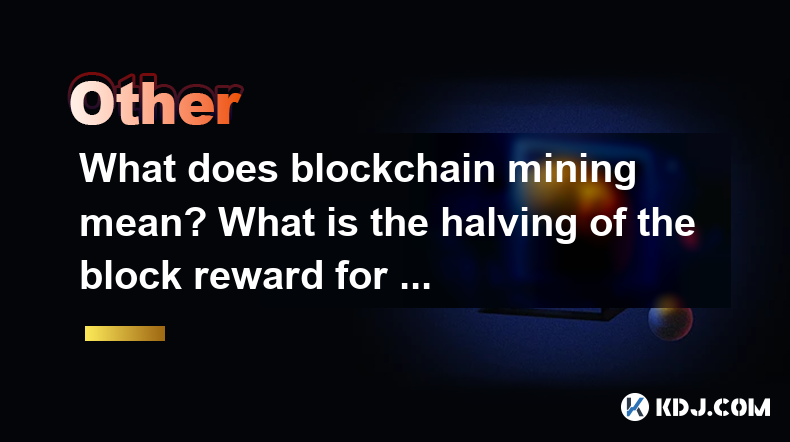
Blockchain mining is a crucial process in the world of cryptocurrencies, particularly for networks like Bitcoin. It involves solving complex mathematical problems to validate transactions and add them to the blockchain, a public ledger of all cryptocurrency transactions. Miners use powerful computers to compete in solving these problems, and the first to solve it gets to add a new block of transactions to the blockchain. In return, they are rewarded with newly minted cryptocurrencies and transaction fees. This process not only secures the network but also introduces new coins into circulation.
The process of mining is essential for maintaining the integrity and security of the blockchain. Without miners, the network would be vulnerable to fraudulent activities, as there would be no one to verify the transactions. Miners are incentivized through the rewards they receive, which encourages them to continue participating in the network. The competition among miners to solve the mathematical problems ensures that the network remains decentralized, as no single entity can control the majority of the mining power.
The Role of Miners in the Blockchain Ecosystem
Miners play a pivotal role in the blockchain ecosystem. They are responsible for ensuring that transactions are legitimate and that the blockchain remains tamper-proof. By validating transactions, miners prevent double-spending, where a user attempts to spend the same cryptocurrency more than once. This validation process involves verifying the digital signatures of the transactions and ensuring that the sender has the necessary funds.
Miners also help in maintaining the chronological order of the blockchain. Each new block added to the blockchain contains a reference to the previous block, creating a chain of blocks. This structure makes it extremely difficult to alter past transactions, as any change would require re-mining all subsequent blocks. The computational power required to do this is prohibitively high, making the blockchain secure against tampering.
The Mechanics of Blockchain Mining
The process of blockchain mining involves several steps:
- Transaction Collection: Miners collect unconfirmed transactions from the network and bundle them into a block.
- Solving the Puzzle: Miners compete to solve a cryptographic puzzle, which requires significant computational power. The puzzle is designed to be difficult but solvable, with the difficulty level adjusted periodically to maintain a consistent block time.
- Block Validation: Once a miner solves the puzzle, they broadcast the new block to the network. Other nodes on the network verify the solution and the transactions within the block.
- Reward Distribution: If the block is validated, the miner who solved the puzzle is rewarded with newly minted cryptocurrencies and transaction fees from the transactions included in the block.
The mining process is resource-intensive, requiring specialized hardware known as ASICs (Application-Specific Integrated Circuits) designed specifically for mining. These devices are far more efficient than general-purpose computers and are essential for competitive mining.
The Concept of Block Reward Halving
The block reward halving is a significant event in the lifecycle of certain cryptocurrencies, most notably Bitcoin. It refers to the reduction of the reward that miners receive for successfully mining a block. This event is programmed into the cryptocurrency's protocol and occurs at predetermined intervals.
For Bitcoin, the block reward halving happens approximately every four years or every 210,000 blocks. The initial block reward was set at 50 Bitcoins per block. The first halving in 2012 reduced it to 25 Bitcoins, the second in 2016 reduced it to 12.5 Bitcoins, and the third in 2020 reduced it to 6.25 Bitcoins. The next halving, expected around 2024, will further reduce the reward to 3.125 Bitcoins per block.
The Purpose and Impact of Block Reward Halving
The primary purpose of block reward halving is to control the supply of the cryptocurrency and mimic the scarcity of commodities like gold. By reducing the rate at which new coins are introduced into circulation, halving helps to create a deflationary effect, potentially increasing the value of the existing coins.
The impact of block reward halving can be significant for miners. As the reward decreases, the profitability of mining can be affected unless the price of the cryptocurrency increases proportionally. This can lead to a shift in the mining landscape, with less efficient miners being pushed out of the market. However, the reduction in new supply can also lead to increased demand and higher prices, which can offset the reduced rewards.
The Economic Implications of Halving
The economic implications of block reward halving are multifaceted. On one hand, the reduction in new supply can lead to a bullish market sentiment, as investors anticipate a potential increase in the value of the cryptocurrency. This anticipation can drive up demand and prices in the lead-up to and following a halving event.
On the other hand, the reduced rewards can make mining less profitable, potentially leading to a decrease in the overall hash rate of the network. A lower hash rate can make the network more vulnerable to attacks, as it becomes easier for malicious actors to gain control over a significant portion of the network's mining power.
The Future of Mining and Halving
As the block reward continues to halve, the future of mining and the sustainability of the network become important considerations. With each halving, the reliance on transaction fees as a primary source of income for miners increases. This shift can lead to changes in the behavior of users and miners, as well as the overall structure of the network.
The future of mining will likely see continued advancements in technology, with more efficient mining hardware and potentially new consensus mechanisms being developed. These innovations will be crucial in maintaining the security and efficiency of the blockchain as the rewards for mining continue to decrease.
The Role of Mining Pools
Mining pools have become a popular way for individual miners to combine their computational resources and increase their chances of solving the cryptographic puzzle and earning rewards. By pooling their resources, miners can share the rewards proportionally to their contributed hash power.
Mining pools can help mitigate the impact of block reward halving by spreading the reduced rewards across a larger group of participants. This can make mining more sustainable for individual miners who might otherwise find it unprofitable to continue mining on their own.
The Environmental Impact of Mining
The environmental impact of blockchain mining, particularly for energy-intensive cryptocurrencies like Bitcoin, has become a topic of significant concern. The high energy consumption associated with mining, driven by the need for powerful computational hardware, has led to debates about the sustainability of the practice.
Efforts are being made to address these concerns, including the development of more energy-efficient mining hardware and the exploration of alternative consensus mechanisms that require less energy. Additionally, some miners are turning to renewable energy sources to power their operations, which can help reduce the overall environmental impact.
The Social and Political Dimensions of Mining
The social and political dimensions of blockchain mining are also noteworthy. The decentralization promised by cryptocurrencies is often challenged by the concentration of mining power in certain regions or among a few large mining pools. This concentration can lead to concerns about the potential for centralization and control over the network.
Regulatory responses to mining vary by country, with some governments embracing the technology and others imposing restrictions or outright bans. These regulatory differences can influence the global distribution of mining power and the overall health of the blockchain network.
The Evolution of Mining Algorithms
The evolution of mining algorithms is another aspect to consider. As mining becomes more competitive and the rewards decrease, the algorithms used to secure the blockchain may need to adapt. Some cryptocurrencies have already moved away from proof-of-work (PoW) mining, which is the method used by Bitcoin, to proof-of-stake (PoS) or other consensus mechanisms that require less energy and computational power.
The shift to alternative consensus mechanisms can have significant implications for the role of miners and the overall structure of the blockchain. While PoW requires miners to solve complex mathematical problems, PoS and other mechanisms rely on different methods to validate transactions and secure the network.
The Challenges and Opportunities of Mining
The challenges and opportunities of blockchain mining are intertwined. On one hand, miners face challenges such as increasing competition, rising energy costs, and the potential for reduced profitability due to halving events. On the other hand, the opportunities for innovation and growth in the mining sector are vast.
Miners who can adapt to changing conditions and invest in more efficient technologies may find themselves well-positioned to continue profiting from the network. Additionally, the development of new cryptocurrencies and blockchain projects can provide new avenues for mining and participation in the ecosystem.
The Role of Mining in Decentralization
Mining plays a crucial role in maintaining the decentralization of the blockchain. By allowing anyone with the necessary hardware and software to participate in the validation of transactions, mining helps prevent any single entity from gaining control over the network. This decentralized nature is one of the core principles of many cryptocurrencies and is essential for their security and integrity.
However, the concentration of mining power in certain regions or among a few large mining pools can pose a threat to this decentralization. Efforts to promote more widespread participation in mining and to develop technologies that make mining more accessible can help address these concerns and maintain the decentralized ethos of the blockchain.
The Impact of Mining on Cryptocurrency Prices
The impact of mining on cryptocurrency prices is a complex and often debated topic. The process of mining and the events like block reward halving can influence the supply and demand dynamics of the cryptocurrency market. When the block reward is halved, the reduced supply of new coins can lead to an increase in the price if demand remains constant or grows.
However, other factors such as market sentiment, regulatory changes, and broader economic conditions also play a significant role in determining cryptocurrency prices. The relationship between mining and prices is not always straightforward, and investors and miners alike must consider a wide range of factors when making decisions.
The Technological Advancements in Mining
Technological advancements in mining are crucial for the continued growth and sustainability of the blockchain. As the difficulty of mining increases and the rewards decrease, miners must continually upgrade their hardware and software to remain competitive. The development of more efficient ASICs and the exploration of alternative consensus mechanisms are key areas of focus.
Additionally, the rise of cloud mining services allows individuals to participate in mining without the need for expensive hardware. These services lease mining power from large-scale operations, making mining more accessible to a broader audience. However, the profitability and reliability of cloud mining can vary, and potential participants should carefully research any service before investing.
The Regulatory Landscape of Mining
The regulatory landscape of mining varies widely across different jurisdictions. Some countries have embraced blockchain technology and mining, offering favorable conditions and incentives for miners. Others have imposed strict regulations or outright bans, citing concerns about energy consumption, financial stability, or the potential for illicit activities.
These regulatory differences can significantly impact the global distribution of mining power and the overall health of the blockchain network. Miners must navigate this complex landscape and adapt to changing regulations to continue operating successfully.
The Community and Culture of Mining
The community and culture surrounding blockchain mining are vibrant and diverse. Miners often share tips, strategies, and innovations through online forums and social media platforms. This sense of community can be a valuable resource for new miners looking to learn the ropes and for experienced miners seeking to stay ahead of the curve.
The culture of mining also includes a strong focus on innovation and problem-solving. Miners are often at the forefront of technological advancements in the blockchain space, pushing the boundaries of what is possible and contributing to the overall growth and development of the ecosystem.
The Future of Mining and Blockchain Technology
The future of mining and blockchain technology is closely intertwined. As blockchain technology continues to evolve and find new applications, the role of mining and the mechanisms used to secure these networks will likely undergo significant changes. The development of more sustainable and efficient mining practices will be crucial for the long-term viability of the ecosystem.
Additionally, the continued growth of decentralized finance (DeFi) and other blockchain-based applications may lead to new opportunities for miners and the broader community. The dynamic and ever-changing nature of the blockchain space ensures that mining will remain a critical and evolving component of the ecosystem.
Common Questions Related to Blockchain Mining and Block Reward Halving
Q: What is blockchain mining?
A: Blockchain mining is the process of validating transactions and adding them to the blockchain by solving complex mathematical problems. Miners use powerful computers to compete in solving these problems, and the first to solve it gets to add a new block of transactions to the blockchain, earning rewards in the form of newly minted cryptocurrencies and transaction fees.
Q: Why is mining important for blockchain networks?
A: Mining is crucial for maintaining the security and integrity of blockchain networks. It prevents fraudulent activities like double-spending by verifying transactions and ensures the blockchain remains tamper-proof. Miners are incentivized through rewards, which encourages their continued participation and helps keep the network decentralized.
Q: What is the block reward halving?
A: The block reward halving is an event programmed into certain cryptocurrencies, like Bitcoin, where the reward for mining a block is reduced by half. This occurs at predetermined intervals, typically every four years for Bitcoin, to control the supply of the cryptocurrency and mimic the scarcity of commodities like gold.
Q: How does block reward halving affect miners?
A: Block reward halving can reduce the profitability of mining unless the price of the cryptocurrency increases proportionally. Less efficient miners may be pushed out of the market, but the reduced supply of new coins can also lead to increased demand and higher prices, potentially offsetting the reduced rewards.
Q: What are the economic implications of block reward halving?
A: Block reward halving can lead to a bullish market sentiment due to the reduced supply of new coins, potentially driving up demand and prices. However, it can also make mining less profitable, potentially decreasing the overall hash rate of the network and making it more vulnerable to attacks.
Q: What is the future of mining as block rewards continue to halve?
A: As block rewards continue to halve, miners will increasingly rely on transaction fees for income. Technological advancements in mining hardware and the exploration of alternative consensus mechanisms will be crucial for maintaining the security and efficiency of the blockchain. The future of mining will likely see continued innovation and adaptation to changing conditions.
Q: What are mining pools, and how do they relate to block reward halving?
A: Mining pools are groups of miners who combine their computational resources to increase their chances of solving the cryptographic puzzle and earning rewards. They can help mitigate the impact of block reward halving by spreading the reduced rewards across a larger group of participants, making mining more sustainable for individual miners.
Q: What is the environmental impact of blockchain mining?
A: Blockchain mining, particularly for energy-intensive cryptocurrencies like Bitcoin, can have a significant environmental impact due to high energy consumption. Efforts to address these concerns include developing more energy-efficient mining hardware, exploring alternative consensus mechanisms, and using renewable energy sources.
Q: How does the regulatory landscape affect mining?
A: The regulatory landscape of mining varies by country, with some governments embracing the technology and others imposing restrictions or bans. These regulatory differences can influence the global distribution of mining power and the overall health of the blockchain network, requiring miners to adapt to changing regulations.
Q: What role does the community play in blockchain mining?
A: The community surrounding blockchain mining is vibrant and diverse, with miners sharing tips, strategies, and innovations through online forums and social media. This sense of community can be a valuable resource for new and experienced miners alike, fostering a culture of innovation and problem-solving.
Disclaimer:info@kdj.com
The information provided is not trading advice. kdj.com does not assume any responsibility for any investments made based on the information provided in this article. Cryptocurrencies are highly volatile and it is highly recommended that you invest with caution after thorough research!
If you believe that the content used on this website infringes your copyright, please contact us immediately (info@kdj.com) and we will delete it promptly.
- VanEck Has Made a Big Move in Bringing a Binance Coin BNB/USD ETF to the United States
- 2025-04-04 02:25:12
- 3 Low-Cap Altcoins with Insane Potential in 2025: Dawgz AI ($DAGZ), Render (RNDR), and Sei (SEI)
- 2025-04-04 02:25:12
- A major Solana ($SOL) whale has returned to the spotlight after transferring substantial funds to Binance in two separate batches.
- 2025-04-04 02:20:11
- The U.S. Senate Banking Committee has voted to approve Paul Atkins' nomination for the role of Chair of the Securities and Exchange Commission (SEC).
- 2025-04-04 02:20:11
- Pepe Coin (PEPE) Demonstrates Remarkable Growth
- 2025-04-04 02:15:12
- We Asked AI to Predict Litecoin (LTC) Price in Q2 2025 Following Fidelity's Crypto IRA News
- 2025-04-04 02:15:12
Related knowledge
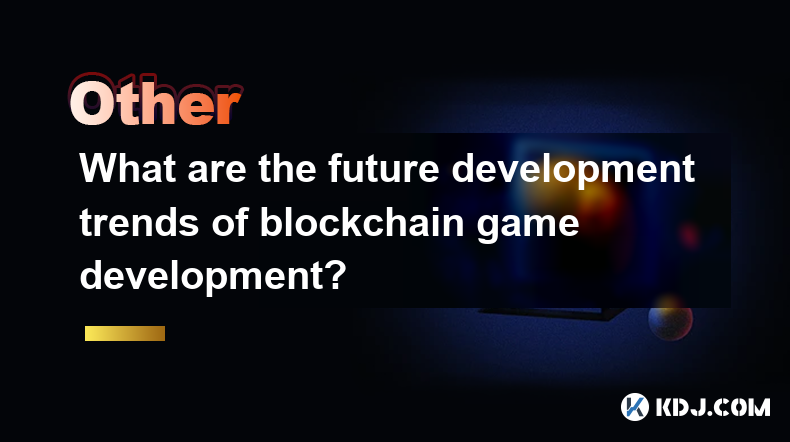
What are the future development trends of blockchain game development?
Apr 03,2025 at 05:00am
Blockchain technology has revolutionized various industries, and gaming is no exception. As we look to the future, several trends are set to shape the development of blockchain games. These trends not only promise to enhance the gaming experience but also to integrate blockchain technology more seamlessly into the gaming ecosystem. Let's explore these t...
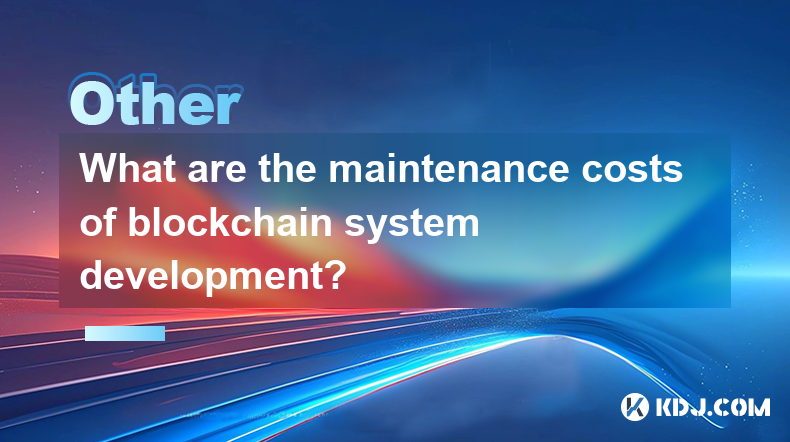
What are the maintenance costs of blockchain system development?
Apr 03,2025 at 06:07pm
The maintenance costs of blockchain system development are multifaceted and depend on various factors. These costs can include technical maintenance, security updates, infrastructure expenses, and personnel costs. Understanding these elements is crucial for anyone planning to develop or maintain a blockchain system. Technical MaintenanceTechnical mainte...
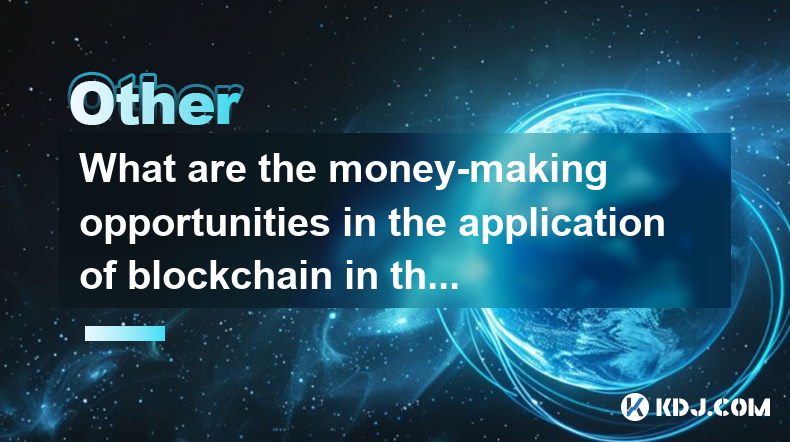
What are the money-making opportunities in the application of blockchain in the medical industry?
Apr 03,2025 at 03:35am
The integration of blockchain technology into the medical industry presents a myriad of money-making opportunities that can revolutionize healthcare systems. Blockchain's inherent characteristics, such as transparency, security, and immutability, make it an ideal solution for various medical applications. By leveraging blockchain, companies can develop ...
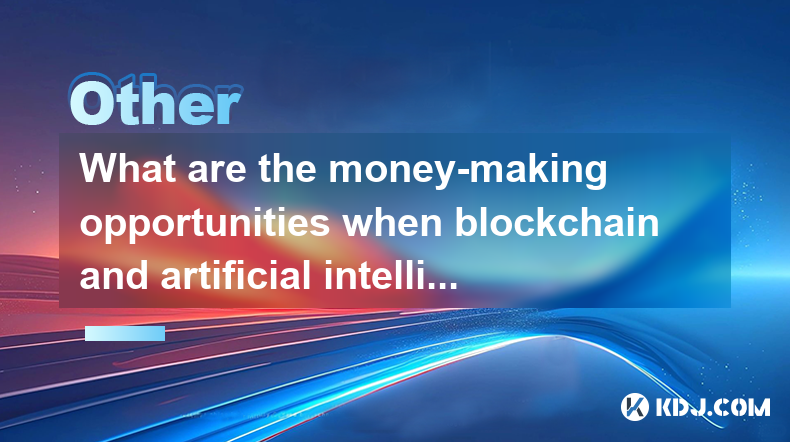
What are the money-making opportunities when blockchain and artificial intelligence are combined?
Apr 04,2025 at 01:28am
The convergence of blockchain and artificial intelligence (AI) presents a myriad of money-making opportunities within the cryptocurrency circle. This fusion leverages the decentralized and secure nature of blockchain with the analytical prowess of AI, creating innovative solutions and platforms that can generate significant revenue. From enhancing tradi...
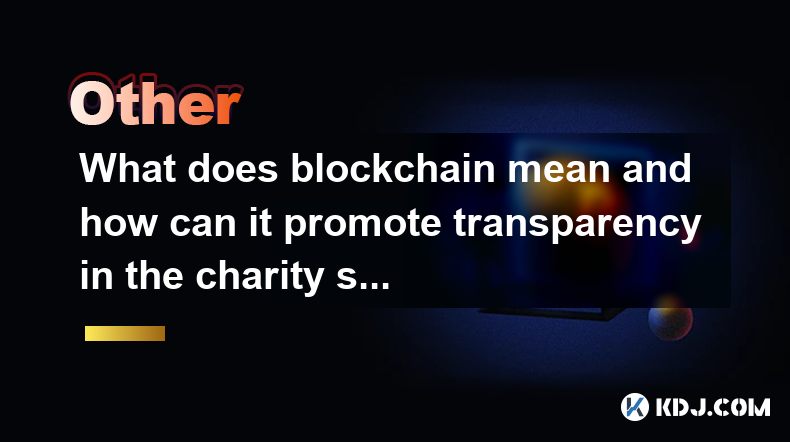
What does blockchain mean and how can it promote transparency in the charity sector?
Apr 03,2025 at 08:29pm
Blockchain technology is a decentralized, distributed ledger that records transactions across numerous computers. This ensures that the data is transparent and nearly impossible to alter retroactively. Essentially, blockchain serves as a digital ledger of all cryptocurrency transactions, enabling secure and direct exchanges without the need for intermed...
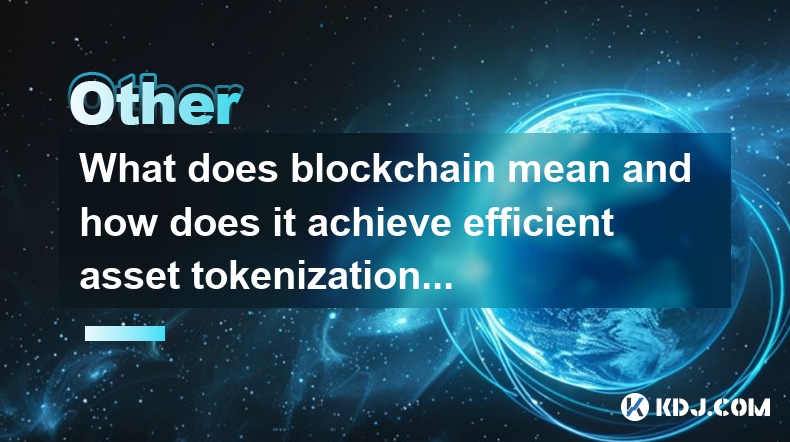
What does blockchain mean and how does it achieve efficient asset tokenization?
Apr 03,2025 at 07:57pm
Blockchain technology is a decentralized, distributed ledger that records transactions across numerous computers. It ensures that each transaction is secure, transparent, and immutable. The concept of blockchain was introduced with the launch of Bitcoin in 2009, but its applications have since expanded far beyond cryptocurrencies. At its core, blockchai...

What are the future development trends of blockchain game development?
Apr 03,2025 at 05:00am
Blockchain technology has revolutionized various industries, and gaming is no exception. As we look to the future, several trends are set to shape the development of blockchain games. These trends not only promise to enhance the gaming experience but also to integrate blockchain technology more seamlessly into the gaming ecosystem. Let's explore these t...

What are the maintenance costs of blockchain system development?
Apr 03,2025 at 06:07pm
The maintenance costs of blockchain system development are multifaceted and depend on various factors. These costs can include technical maintenance, security updates, infrastructure expenses, and personnel costs. Understanding these elements is crucial for anyone planning to develop or maintain a blockchain system. Technical MaintenanceTechnical mainte...

What are the money-making opportunities in the application of blockchain in the medical industry?
Apr 03,2025 at 03:35am
The integration of blockchain technology into the medical industry presents a myriad of money-making opportunities that can revolutionize healthcare systems. Blockchain's inherent characteristics, such as transparency, security, and immutability, make it an ideal solution for various medical applications. By leveraging blockchain, companies can develop ...

What are the money-making opportunities when blockchain and artificial intelligence are combined?
Apr 04,2025 at 01:28am
The convergence of blockchain and artificial intelligence (AI) presents a myriad of money-making opportunities within the cryptocurrency circle. This fusion leverages the decentralized and secure nature of blockchain with the analytical prowess of AI, creating innovative solutions and platforms that can generate significant revenue. From enhancing tradi...

What does blockchain mean and how can it promote transparency in the charity sector?
Apr 03,2025 at 08:29pm
Blockchain technology is a decentralized, distributed ledger that records transactions across numerous computers. This ensures that the data is transparent and nearly impossible to alter retroactively. Essentially, blockchain serves as a digital ledger of all cryptocurrency transactions, enabling secure and direct exchanges without the need for intermed...

What does blockchain mean and how does it achieve efficient asset tokenization?
Apr 03,2025 at 07:57pm
Blockchain technology is a decentralized, distributed ledger that records transactions across numerous computers. It ensures that each transaction is secure, transparent, and immutable. The concept of blockchain was introduced with the launch of Bitcoin in 2009, but its applications have since expanded far beyond cryptocurrencies. At its core, blockchai...
See all articles






















































































